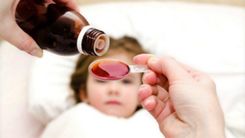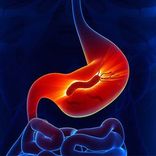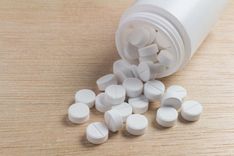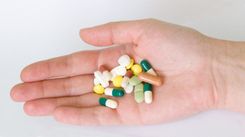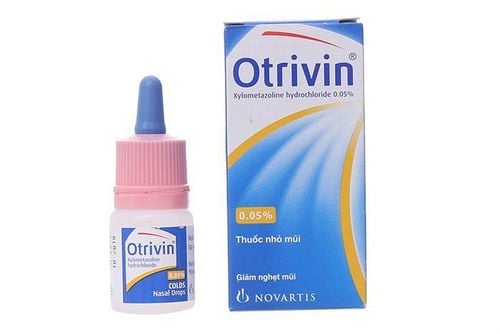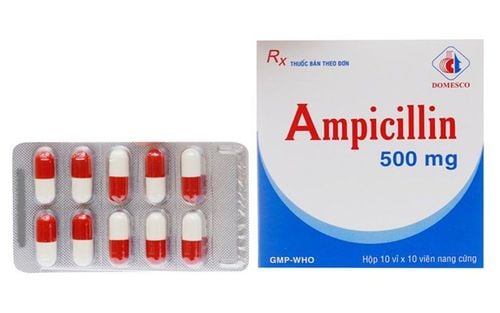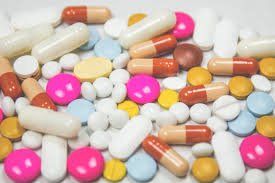Amoclan is an antibiotic, used in cases of bacterial infections that are sensitive to antibiotics. To better understand the uses of the drug, please refer to the article below.
1. What is Amoclan?
Amoclan is an antibiotic consisting of two main ingredients, Amoxicillin and clavulanate. With this combination, Amoclan can be used to treat bacterial infections in many different parts of the body.
Amoxicillin is an antibiotic belonging to a group of drugs called beta-lactams. They work by killing bacteria and preventing growth by inhibiting the synthesis of bacterial cell walls. However, this drug will not work for colds, flu or other viral infections. In addition, Amoxicillin antibiotics do not work on bacteria that secrete beta-lactamase enzymes, because it inactivates the beta-lactam ring in the drug.
2. Uses of Amoclan
Amoclan is indicated for use in the following cases thanks to its antibacterial properties:
- Upper respiratory tract infections: rhinopharyngitis, sinusitis, otitis media, tonsillitis, adenoiditis, and acute pharyngitis caused by bacteria.
- Lower respiratory tract infections: acute bronchitis and chronic bronchitis, pneumonia.
- Skin and soft tissue infections.
- Urinary tract infections: Cystitis, urethritis.
- Genital infections such as inflammation after giving birth, abortion...
Note: Do not use this medicine in the following cases:
- Patients with a history of allergy to any ingredient in the drug, or allergy to beta-lactam antibiotics.
- Cross-reactivity among Cephalosporins antibiotics may occur. Therefore, if there is a severe allergy to Cephalosporin antibiotics, it should not be used.
- Patients with a history of jaundice or hepatobiliary dysfunction related to the use of Amoxicillin and clavulanic acid antibiotics.
- Patients with severe renal failure should not use it.
3. How to use and dosage of Amoclan
How to use the drug: Depending on the dosage form, there are different ways to use it. If it is in powder form, mix the powder with filtered water and drink before meals. If it is in tablet form, drink it with water before meals. Do not chew or crush the tablet to avoid destroying the structure of the drug. You should use it according to the manufacturer's instructions to avoid improper use.
Dosage:
The dosage of this drug will be different for different patients. You should use the drug as directed by your doctor. Here are the dosages you can refer to:
For bacterial infections:
- Adults, adolescents and children weighing 40 kg or more: Use at a dose of 250 to 500 milligrams (mg) every 8 hours, or 500 to 875 mg every 12 hours.
- Children 3 months of age and older and people weighing less than 40 kilograms (kg): Dosage is based on body weight and must be determined by a doctor. The usual dose is 20 to 40 mg per kg of body weight per day and is divided into 3 doses. Or 25 to 45 mg per kg of body weight per day divided and given to the patient every 12 hours.
- Children under 3 months of age: The medicine must be given according to the appropriate weight and dosage form.
Symptoms of overdose may include: Abdominal pain or stomach pain, cloudy urine, diarrhea, little urine, drowsiness,... the patient should be taken to a medical facility for emergency treatment in case of overdose.
If you miss a dose of this medicine, take it as soon as you remember. However, if it is almost time for the next dose, skip the missed dose and go back to the regular dosing schedule.
4. Side effects when using Amoclan
Along with the effects needed for treatment, the drug can cause some unwanted effects.
Some less common side effects: Rash, itchy skin, itching of the vagina or genital area, pain during sex, red skin, skin rash, and vaginal discharge that is thick and white, odorless, or has a mild odor.
Some side effects may occur that usually do not require medical attention. These side effects may disappear during treatment with the drug. But if side effects persist or are dangerous, stop taking the drug and notify your doctor immediately or go to a medical facility for support.
5. Notes when using Amoclan
Before using the drug, you need to read the instructions carefully and note some things including:
- For children, the use of the drug is sometimes limited. It is especially important to note that the dosage form is in tablet form, so the appropriate form of medicine should be used for children.
- For the elderly, you should also pay attention because the elderly often have impaired kidney function, so the dose may need to be adjusted for patients using a combination of amoxicillin and clavulanate.
- Inform your doctor about allergies or other medical conditions, because the presence of other medical problems may affect the use of this drug. Especially diarrhea, liver and kidney disease, and Phenylketonuria (PKU) because the drug contains phenylalanine, which can make this condition worse.
If your symptoms do not improve within a few days of taking this medication, or if they worsen, you should consult your doctor.
In some young patients, tooth discoloration may occur when using this medicine, resulting in brown, yellow, or gray stains on the teeth. To help prevent this, make sure to brush your teeth regularly or have your teeth cleaned by a dentist.
This information pertains to the uses, administration, and important notes regarding Amoclan. As an antibiotic, it should only be used when prescribed for an infection, and you should follow your doctor's instructions closely. Avoid changing the timing or dosage on your own to prevent potential drug interactions.
To arrange an appointment, please call HOTLINE or make your reservation directly HERE. You may also download the MyVinmec app to schedule appointments faster and manage your reservations more conveniently.
